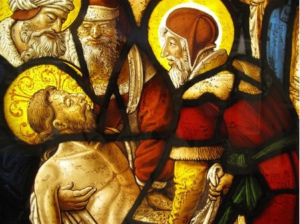 Stained glass windows have been around for a long time, and back in The Middle Ages, between 1150 and 1500, the creation, installation, and enjoyment of stained glass windows in European cathedrals had their heyday.
Stained glass windows have been around for a long time, and back in The Middle Ages, between 1150 and 1500, the creation, installation, and enjoyment of stained glass windows in European cathedrals had their heyday.
Thanks to written records from people of the time, such as Theophilus, a German monk, we can have an understanding of the process of stained glass creators back then. Theophilus was an artist and metalworker who wrote On Diverse Arts, which included detailed accounts of creating stained glass windows of the time.
During medieval times, stained glass windows were made from a combination of sand and potash (wood ash). These two ingredients were heated to the point where they’d liquify and become glass when cooled. In order to color the glass, powdered metals were added into the molten (heated) mixture before it cooled.
Stained glass was a mosaic of different shapes and sizes of glass, first assembled on a drawn piece of board to map out their placements. If there was a need for shadows or outlines, artists would use black paint to add these details to the glass.
In order to connect the pieces of stained glass in their patterns as determined by the artist, lead was used along with putty. When put together like pieces of a puzzle, the whole window became stabilized by an iron frame. That’s how stained glass windows were made during The Middle Ages.
Today, Cumberland Stained Glass of Mechanicsburg, PA, is in the business of building, installing and restoring stained glass. When restoring old windows, workers not only document the window first, but also dismantle the panes and clean each piece of glass much to the delight of owners. Just like in The Middle Ages, stained glass is still providing exquisite beauty for all those who experience it.
To have stained glass windows restored at your home, business, church, or other establishment, please contact Cumberland Stained Glass at 717-691-8290.
